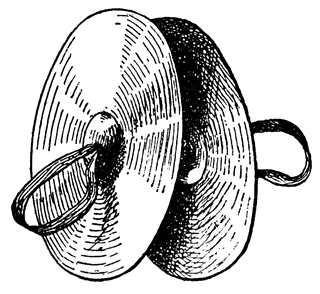A brief, honorable mention of day 16: The first half of class was a rehash of the post “Day 15”, as the research posted was the homework for that class. We then went on to discuss the history of recording.
Timeline:
* 1800-1920s: With the advent of new technological advancements such as telephones, movies, and the phonograph, sound was scientifically studied for the first time.
*1916: It is now possible to control sound (a large empty building with no echo).
*1925: Electrical recording brought about the microphone (introduced in 1929) adding a new wave of singers with small, pleasing voices, rather than the previously necessary loud volumed singers (Bing Crosby vs. Adele).
*1950s: Recording accomplished by tape, in large studios with necessary sound requirements.
*1970s: Multi-track tapes and stereos became commonplace. This allowed the recording of 27 instruments simultaneously, to then be edited separately. Singers in this time could have more bad days than good, and still sound excellent on record.
*1980s: The mixing board became popular
* Today: DAW (Digital Audio Workshop) has replaced much of the above, including humans. This allows a computer to function as a recording studio.
Day 17 went on to discuss “Happy Birthday”, the copyright battle.
Question: did you know that the song “happy birthday” was under copyright?
Although we all song the song without much thought, it was actually prohibited to do so in a public setting without paying the Warner/Chappell music corporation. It is possible to own the rights to an intangible concept, so long as you’re the one to invent it. However, Warner/Chappell didn’t;t invent the song. Instead, they bought the rights to the song after it bounced around for a decade or two. Applying for copyright within the corporation, the public domain had provision access to it (legally). This continued long after the original end of the copyright due to the concept of a corporation – a person by law. A corporation is an intangible being made by law that limits legal liability in the case of an unfortunate occurrence in using the product/idea.
Due to evidence clearly displaying the song released to the public domain without copyright protection before Warner/Chappell acquired the song, the trial was settled, Warner/Chappell having to pay approximately $14 million USD to those it had previously charged for the rights to use the song in public.
The argument behind this in class was about the morality of copyright. In “Happy Birthday”‘s case, it is an integral part of human tradition (spanning the globe in multiple languages). Under copyright, this song was enclosed from the public domain (only acceptable with close family and friends, and usable in restaurants if they had previously paid the Warner/Chappell music corporation for its use). The argument against copyright demonstrated that the perpetuation of copyrighted ownership stalls innovation and chokes creativity (due to the public’s inability to change/make improvements/use in a different context without Warner/Chappell’s consent). The argument for copyright stated that the owner should be compensated for the work put into creating the property, be it physical or intellectual (ideas, songs, etc).
Neither of these arguments are wrong in my opinion, yet the copyright for the song should have expired some time ago. The reason it was still under copyright is due to the corporation. When something as expensive as “Happy Birthday”, or even Walt Disney’s “Mickey Mouse” is about to be released into the public domain (the copyright ending), the corporation sends its goons (the employees) to extend the copyright, so that they can collect more money. Here’s a copyright law timeline:
*1790: First US copyright act. The property would be under a 14 year copyright, which could be renewed upon expiration another 14 years if the inventor was still alive.
*1831: The first term of copyrighted property would last 28 years, with a renewable 14 years if the inventor was still alive.
* 1909: Currently 28 year first term, with a 28 year renewal if the inventor still lived.
*1976: The copyright would last until 50 years after the death of the inventor, allowing the successor/heir to receive some benefits.
*1998: The length was extended to 70 years after the death of the inventor, with some exceptions. If the property was owned by a corporation, the date would be extended to 95 years from the date of publication, or 120 years from its creation, whichever expired first.
Corporations receive special credit in the ownership of the property (for whichever reason, I don’t currently know). Furthermore, the end date of copyright continues to be extended. Earlier I mentioned Walt Disney’s Mickey Mouse. The original copyright expiration occurred in 1984 (56 years, renewal included). Yet these extensions of copyright law have now pushed that expiration date to 2023. Will Walt Disney’s Mickey Mouse be released into the public domain? Or will there be another addition to copyright law?
 The human ear does not always hear everything. In class, my teacher played a (very unpleasant) hearing test through the classroom speakers. A little after half way through, our teacher claimed not to hear a thing (meanwhile I’m covering my ears because the sound felt as though it were compressing my brain). Eventually, the rest of my class could not hear a sound before the final note of the test. The older one is, the less the human ear can hear, resulting in the difference between my and my teacher’s overall hearing score. In class, we also discussed that the lowest note the human ear can hear is at 20 hertz (which is very difficult to hear without straining), and the bass guitar (made for playing such low notes) cannot play less than 40 hertz.
The human ear does not always hear everything. In class, my teacher played a (very unpleasant) hearing test through the classroom speakers. A little after half way through, our teacher claimed not to hear a thing (meanwhile I’m covering my ears because the sound felt as though it were compressing my brain). Eventually, the rest of my class could not hear a sound before the final note of the test. The older one is, the less the human ear can hear, resulting in the difference between my and my teacher’s overall hearing score. In class, we also discussed that the lowest note the human ear can hear is at 20 hertz (which is very difficult to hear without straining), and the bass guitar (made for playing such low notes) cannot play less than 40 hertz.
 Another hearing imperfection for humans encompasses temporal masking. Studies have shown that for a minuscule range of time before and after a large sound (the clang of a cymbal or the crash of broken glass), humans cannot hear anything except that large sound. This is said to harken to the time before humans were the top predator, when we were still wary of another creature. This instinct would allow us to realize that we are not alone. This interesting feature of the human ear allows for further compression between distinctly loud sounds in a recording.
Another hearing imperfection for humans encompasses temporal masking. Studies have shown that for a minuscule range of time before and after a large sound (the clang of a cymbal or the crash of broken glass), humans cannot hear anything except that large sound. This is said to harken to the time before humans were the top predator, when we were still wary of another creature. This instinct would allow us to realize that we are not alone. This interesting feature of the human ear allows for further compression between distinctly loud sounds in a recording.

 Cuban and Puerto Rican Mambo beat, the Bolivian folk and Peruvian versions, then remade into Brazilian Portuguese with the Brazilian carimbó turned Lambada by the French producer and his African-French band. This is then again remastered by its Cuban and Puerto Rican roots by Jennifer Lopez and Pitbull, bring the displacement full circle.
Cuban and Puerto Rican Mambo beat, the Bolivian folk and Peruvian versions, then remade into Brazilian Portuguese with the Brazilian carimbó turned Lambada by the French producer and his African-French band. This is then again remastered by its Cuban and Puerto Rican roots by Jennifer Lopez and Pitbull, bring the displacement full circle. Sampling – the grabbing of a small piece of audio and replaying it somewhere else (class definition). This is popularly done with a form of compression. There are two types of compression in this regard, the first of which pertains to data: making a computer file smaller. This could be done due to Claude Shannon, the smart guy from one of my earlier posts. He was able to diminish the redundancies in the English language, then created some randomized words, some of which resembled an actual sentence someone might speak. This same process is used for compressing digital technology. Today, we notice that it’s easy to transfer files (say an attachment to an email), barring the split second it takes to load. What’s it doing while the loading circle appears? A lot of times, it’s compressing; yet when reopened later, there seems to be no change from the original format.
Sampling – the grabbing of a small piece of audio and replaying it somewhere else (class definition). This is popularly done with a form of compression. There are two types of compression in this regard, the first of which pertains to data: making a computer file smaller. This could be done due to Claude Shannon, the smart guy from one of my earlier posts. He was able to diminish the redundancies in the English language, then created some randomized words, some of which resembled an actual sentence someone might speak. This same process is used for compressing digital technology. Today, we notice that it’s easy to transfer files (say an attachment to an email), barring the split second it takes to load. What’s it doing while the loading circle appears? A lot of times, it’s compressing; yet when reopened later, there seems to be no change from the original format. There are a lot of songs that have been sampled, and more that include these samples (access
There are a lot of songs that have been sampled, and more that include these samples (access 

